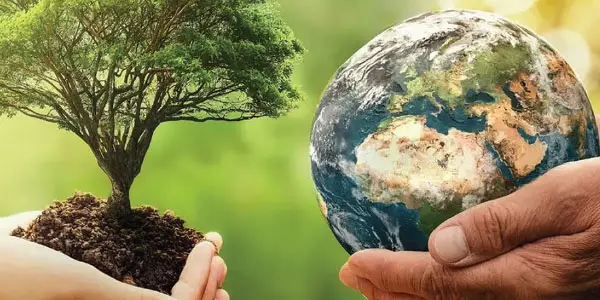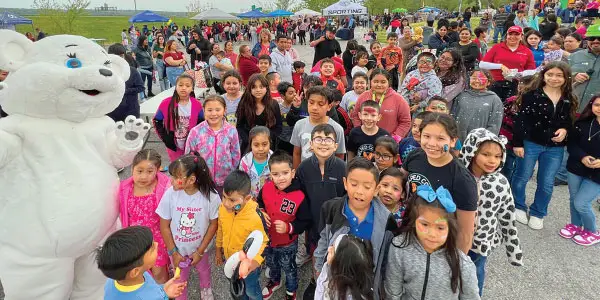
Me duele enormemente ver lo que están sufriendo México y Venezuela, dos países a los que quiero mucho. Es casi la guerra.
México es un país maravilloso. Amoroso (es muy difícil sentirse solo ahí), solidario, lleno de colores y de humor, muy privilegiado cultural y geográficamente. Oye, y qué rico se come.
Pero hay tantos muertos que el International Institute for Strategic Studies lo declaró el segundo país más peligroso del mundo. A pesar del pataleo oficial, en el 2016 sólo en Siria murieron violentamente más personas que en México.
Las cuentas son mortales. Con Enrique Peña Nieto ya pasamos los 79 mil muertos en menos de cinco años. Es difícil encontrar a una familia mexicana que no haya sufrido recientemente un crimen en carne propia. Basta preguntar sin mucho afán para escuchar un anecdotario del horror y del sadismo.
De los últimos días se me han quedado dos imágenes grabadas.
Una foto, ampliamente compartida en redes sociales, muestra un sombrero manchado de sangre que pertenecía a Javier Valdez, un periodista conocido por cubrir el narcotráfico. Lo acribillaron a principios de este mes en Culiacán, Sinaloa. La otra foto es de un soldado mexicano ejecutando a un civil desarmado en una calle en Palmarito, Puebla, tras un tiroteo. Ambas imágenes son igualmente brutales.
Pero el problema es que los mexicanos nos hemos acostumbrado a lo brutal. Y al aceptar lo brutal como normal hemos perdido la sensación de urgencia y la necesidad de justicia. La muerte ronda tan frecuentemente que se ha hecho compañera.
Lo que antes indignaba —la desaparición de 43 estudiantes de Ayotzinapa o las masacres de Tlatlaya y Nochixtlán— de pronto es parte de una larga lista de crímenes impunes. Hay tantos Ayotzinapas pasando en México cada mes —jóvenes que desaparecen del mapa sin ninguna pista— que nos hemos vuelto insensibles a la tragedia de madres y padres buscando desesperadamente a sus hijos e hijas.
Y lo peor es que nadie espera nada del presidente Peña Nieto. Que levante la mano el que confía en un cambio de rumbo y que las cosas van a mejorar antes que se vaya el primero de diciembre del 2018. Exacto. No veo ninguna mano arriba.
Mientras México está marcado por la casi inevitable rutina de la muerte, como en un cuento de Juan Rulfo, en Venezuela las calles siguen llenas de esperanza de cambio … y de gases lacrimógenos de la Guardia Nacional Bolivariana.
Venezuela es tan hermosa que Cristóbal Colón, en su tercer viaje, creyó que se acercaba al paraíso terrenal. Ese es el mismo territorio que hoy se desmorona.
Desde que Nicolás Maduro se quitó la máscara de demócrata y ordenó la disolución de la Asamblea Nacional, las calles de Caracas y de las principales ciudades de Venezuela se han convertido en un campo de batalla. Literalmente.
La estrategia es clara: La oposición toma las calles hasta que caiga Maduro o acepte un plan de salida; el gobierno reprime hasta que los opositores no aguanten más.
El prisionero político, Leopoldo López, tiene como grito de guerra la frase: “El que se cansa, pierde”. La oposición ha tomado ese grito como un rezo y no ha cedido las calles. Pero el costo es altísimo: más de 40 muertos, en su mayoría jóvenes que deberían estar estudiando, viajando, bailando y descubriendo la vida, no la muerte.
Dos imágenes de Venezuela me quitan el sueño. Una es la de un guardia que dispara a quemarropa un tubo de gas lacrimógeno al pecho de uno de los manifestantes. El chico se levanta aturdido, herido de muerte y da unos pasos antes de caer. Otra es la de Maduro bailando en un televisor mientras la cámara panea para ver la represión oficial en la calle, como Nerón en el incendio de Roma.
Tras casi 18 años de gobiernos autoritarios y, ahora, de una clara dictadura, los venezolanos no pueden soportar más. En parte es la hambruna y la falta de medicinas hasta en los hospitales. En parte es que han salido casi todos los que se pudieron ir, y los que se quedaron no tienen a dónde ir más que hacia delante. Y en parte es que hasta los mismos chavistas se han desencantado del sistema que ellos crearon.
Tantas veces hemos creído, equivocadamente, que Venezuela iba a cambiar que no quiero ilusionarme demasiado. Pero cuando vi que un grupo de jóvenes hacían retroceder a una tanqueta del régimen, pensé: Ya perdieron el miedo en Venezuela, se acabó Maduro.
No, Venezuela y México no están en guerra. Pero casi.
(Jorge Ramos, periodista ganador del Emmy, es el principal director de noticias de Univision Network. Ramos, nacido en México, es autor de nueve libros de grandes ventas, el más reciente de los cuales es “A Country for All: An Immigrant Manifesto”.)
(¿Tiene algún comentario o pregunta para Jorge Ramos? Envíe un correo electrónico a Jorge.Ramos@nytimes.com. Por favor incluya su nombre, ciudad y país.)
_____________________________________________________________________________________
Two Nations Close to War — With Themselves
It pains me deeply to watch the turmoil afflicting Mexico and Venezuela, two countries I love. Both are suffering so much internal strife that they seem on the brink of war — not with each other, or with other nations, but with themselves.
Mexico is privileged both culturally and geographically — a country rich in solidarity, color and humor. It’s hard to feel lonely there, since the people are so welcoming. (And the food is quite tasty.)
However, the International Institute for Strategic Studies recently described Mexico as the second most dangerous country in the world. Only Syria surpassed Mexico in deaths by violence in 2016 — despite all of Mexico’s official denials about the body count.
In the five years of President Enrique Peña Nieto’s tenure, more than 79,000 people have died violent deaths in Mexico. These days it’s hard to find a Mexican family that hasn’t been affected firsthand by violent crime. All you need to do is ask, and you’ll hear horror stories.
Two recent images of Mexico’s carnage have been haunting me. One photo, widely shared on social media, shows a bloodstained hat that belonged to Javier Valdez, a journalist known for covering drug trafficking. He was shot to death earlier this month in Culiacan, Sinaloa. The other photo is of a Mexican soldier executing an unarmed civilian on a street in Palmarito, Puebla, following a shootout. Both images are equally brutal.
Unfortunately, Mexicans have grown so familiar with such brutality that there has been no urgent reaction to these killings, no widespread calls for justice. In Mexico, death hangs around so often that it has become a companion.
Events that formerly caused outrage — such as the still-unsolved disappearance of 43 college students from Ayotzinapa in 2014 — have become just another item in an ever-growing list of unpunished crimes. So many Ayotzinapas happen every month in Mexico — young people disappearing without a trace — that Mexico has seemingly become insensitive to the horror of parents desperate to find their children.
The worst part is that nobody expects Peña Nieto to do anything about the violence. Few Mexicans believe that the president will change course before he leaves office next year, or that the situation will improve.
While Mexico seems resigned to the cycle of violence, the streets of Venezuela pulse with people hoping for change. Unfortunately, the crowds are being met with tear gas fired at them by Venezuela’s national guard.
Venezuela is so strikingly beautiful that Christopher Columbus, when he saw it on his third voyage to the New World, thought he had arrived in paradise. That paradise is now crumbling, especially since President Nicolas Maduro stopped pretending to be a democratic leader and ordered the dissolution of Congress. These days, the streets of Caracas and other major Venezuelan cities have become battlegrounds.
The opposition’s strategy is clear: Take to the streets until Maduro is toppled or agrees to an exit plan. Meanwhile, the government intends to crack down on the opposition until the protesters simply can’t endure any more.
Leopoldo Lopez, an opposition leader now behind bars, coined a rallying cry to galvanize the movement: “If you get tired, you lose.” The opposition has taken that cry to heart and has refused to yield the streets. But more than 40 people have been killed in clashes with authorities. The victims are mostly young people who should be studying, traveling, dancing and discovering life, not death.
Two recent videos from Venezuela have given me sleepless nights. One shows a guard shooting a tear-gas canister point-blank at a protester’s chest. The protester stands up, staggers a few feet and then falls again, fatally wounded. The other video is of a television screen where Maduro is seen dancing — as the camera pans to show the official crackdown out on the street, as though Maduro were Nero at play while Rome burned.
After almost 18 years of authoritarian rule, and now living under an open dictatorship, Venezuelans can’t take any more. Shortages of food and medicine have become intolerable, and everyone who could get out has left the country. Those who are left behind have no choice but to push forward. And now we’re starting to see that even the Chavistas who created the system are disillusioned with it.
Over the years, many analysts, myself included, have predicted that Venezuela was finally on the verge of change, only to see the status quo remain. But recently when I saw a group of youngsters forcing an armored car to back up, I thought: “They’ve lost their fear in Venezuela. Maduro is over.”
No, civil war hasn’t broken out in Mexico and Venezuela. But both seem headed in that direction.









